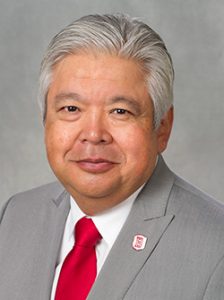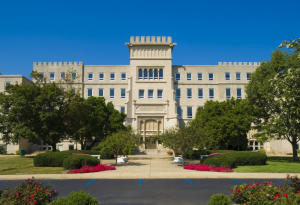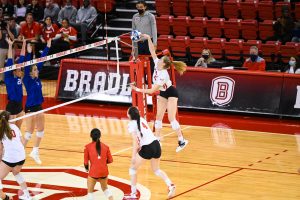Bradley students spend four (or more) years working toward a degree, but where will that diploma take them? As students prepare applications, here are a few ways to put that piece of paper to work.
Entering the work force
Searching for a job can be a daunting task, but the right resources and preparation can help students land a job before second semester hits.
The first step is to avoid limiting options. Although many students have a dream job, it’s not fair to assume they will land it immediately after graduation. Students should seek out jobs with solid professional development opportunities where they can form connections, learn about the profession and start paying off those student loans.
Secondly, resources need to be utilized. Students should go to job fairs, check out LinkedIn, meet with their academic advisers, talk with Smith Career Center advisers about résumés or interviewing tips and attend networking events.
Bradley’s new career management system Bradley netWORK is also a great resource, allowing students to create a profile and upload résumés to apply for numerous jobs nationwide.
“I’m mainly using Bradley network,” senior and job search hopeful Vicki VonBergen said. “Since my résumé and profile are already uploaded, I’ve been able to apply to a few jobs simply by clicking ‘apply now,’ and it’s done.”
Finally, students shouldn’t be afraid to apply for positions that don’t list their major or don’t appear to match their ideal job characteristics. Applying to more positions increases the chances of getting a response. At the very least, students will gain experience in interviewing and forming new relationships. At best, they’ll be in a corner office by May.
Going to grad school
Those looking to further their education may have graduate school in their futures. Programs ranging from subjects as specific as folklore or Scandinavian studies, to broader subjects like psychology and chemistry, are offered in hundreds of grad schools across the nation.
The Graduate Record Exam (GRE) is an aptitude-style test that is meant to assess skills from high school and college level coursework that indicates a student’s potential success in grad school. The three parts–verbal, analytical writing and quantitative– measure students’ abilities to comprehend written material, interpret data, solve problems and clearly articulate complex ideas.
“I studied for at least two months in advance,” senior and physical therapy school hopeful Callie Myers said. “I got two books to help study, [bought] notecards for the verbal part and took at least three practice tests. The tests were the most beneficial because it’s all online and so are the tests, so the feeling and format matched [the real thing] almost identically.”
Verbal and quantitative portions are scored 130-170 in one point increments, while analytical writing is scored 0-6 in half point increments. The test is $160 and is administered by computer year-round.
Leading that lawyer life
For those hoping to become lawyers, the Law School Admission Test (LSAT) is their ticket in. Offered four times per year, this test consists of three parts ranging from reasoning to reading comprehension.
Unlike an average class test, the LSAT is based on the approach to the question, not necessarily whether the content is applicable to the individual’s knowledge of law or not.
The most important thing to remember is that the LSAT is a marathon, not a sprint. Because students are not used to taking a test of this style, it is important to make a study schedule and begin preparing months in advance. Classes and formerly used LSATS are available to students in books and online.
“I started by reading the Powerscore ‘Bibles’ for each of the LSAT sections,” senior and law school hopeful Russell Howland said. “Then [I] took previously administered tests in the months leading up to the exam.”
The test is $170, and scores range from 120 to 180 with a 150 national average. If a student’s first score is not favorable, the LSAT can be taken again; however, scores are averaged when the test is taken more than once, meaning a second test score could raise or drop the end result.
Moving onto medicine
If jumping into deskwork, graduate school or law school aren’t in the plan, maybe it’s time to look into medical school.
For entrance, students need to take the Medical College Admission Test (MCAT). Unlike GRE and LSAT approaches, the MCAT tests students on subject-specific knowledge throughout the exam. Sections cover undergraduate coursework such as chemistry, physics and biology in addition to cognitive and content skills.
Section scores range from 1 to 15 combining to form a raw score between 3 and 45. The national average is 25.2.
“The MCAT is essentially all your academic weaknesses manifested into one big detrimental exam that the rest of your life seemingly relies on,” May graduate Allen Ghareeb, who is currently in Southern Illinois University’s medical school, said. “I was young and ambitious, and I took it during my sophomore year against better judgment. I have no shame in admitting that I took it a second time. Some of us aren’t great at standardized exams, so you just have to find something else to make you sparkle on paper.”
Medical school is competitive as there are approximately 200 students applying for every one spot available in medical school. High scores on the $275 test could land students a hefty scholarship.
Pursuing peace
If students want more world experiences, the Peace Corps offers a suitable option. An international service organization meant to address needs of those in other countries, the Peace Corps fosters relationships and brings the knowledge gained from those experiences back to the U.S. This two-year service program is offered in more than 60 countries.
Recent changes to the Peace Corps process allows students to choose programs and countries they want to apply to with set deadlines for applying and receiving decisions as well as a shorter, more user-friendly application.
“With our new, shorter application process, we’re seeing record numbers of Americans apply for Peace Corps service,” said Peace Corps Director Carrie Hessler-Radelet in a statement Sept. 19. “While the school year may have just begun, I want to make sure college seniors considering the Peace Corps apply as soon as possible so they can secure the volunteer position of their choice and leave for service shortly after graduation.”
For more information on how to start planning for after graduation, visit the Smith Career Center page on the Bradley website.








